Archive for September 2017
Birth, Sleep, Germs, & Race: New Science Reveals How Much We’re Affected by Bad Air
“Maternal exposure to ambient air pollution and fetal growth”
Universities of Edinburgh and Aberdeen, August 2017
Scientists studied maternal exposure to ambient concentrations of PM10, PM2.5 and nitrogen dioxide (NO2) for in utero fetal growth, size at birth and effect modification by smoking status.
“Dirty air can lead to women giving birth to smaller babies ,according to new research which also warns that exposure to air pollution during pregnancy rivals the damage done by smoking. Lead scientist Dr Tom Clemens explained that his team’s findings showed that “a foetus with a non-smoking mother exposed to high pollution levels is only slightly better off than one with a smoking mother exposed to low levels of pollution”. Clemens urged the World Health Organization (WHO) and the European Union to review their separate definitions of what emission levels are considered acceptable.“
“Air Pollution and the Microbiome” 
University of Milan, September 2017
This is the first study to look at how air pollution levels relate to types of respiratory microbe in healthy people.
“Exposure to air pollution correlated with differences in the species of bacteria living in our respiratory tracts. Higher levels of particulates in the air from three days before sampling correlated with a lower diversity of bacteria in the nasal swabs. The concentration of Actinobacteria, the dominant group in a healthy microbiome, was lower in volunteers exposed to higher levels of pollution. The part that these bacteria play in the body is not yet clear, but they are known to produce compounds with antimicrobial and anti-inflammatory properties. Another group of bacteria that can cause harmful respiratory infections, Moraxella, was typically found in greater concentrations in people exposed to higher pollution levels.” This is interesting because other studies have linked both air pollution AND gut bacteria to Autism.
 “Relation of Air Pollution to Sleep”
“Relation of Air Pollution to Sleep”
University of Washington, September 2017
A study linking air pollution to sleep efficiency, which is determined by comparing the amount of time participants spend sleeping at night to the time they spend awake.
“After collecting air pollution data in six U.S. cities over the course of five years, researchers analyzed the sleeping patterns of 1,863 participants—all of whom lived near those cities—over a span of seven days and found higher levels of nitrogen dioxide and particulates called PM 2.5 were linked to lower sleep efficiency. Further examination found that the highest levels of nitrogen dioxide increased the participants’ chances of suffering from low sleep efficiency by nearly 60 percent. The highest levels of PM 2.5s increased the odds of poor sleep by nearly 50 percent. Researchers also found the more participants were exposed to air pollution, the more hours in a day they spent awake.”

“Changes in Transportation-Related air Pollution Exposures by Race-Ethnicity and Socioeconomic Status”
University of Washington, September, 2017
People of color are still far more likely to suffer from harmful air pollution than white people across the US and this disparity has barely improved in recent years, despite overall improvements in air quality.
Meet our New Board Members
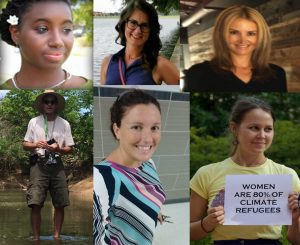
We’re very excited to have five brand new board members and a staff scientist join us since the beginning of summer to help us launch our Downwinders 3.0 program work. Each has their own set of special skills and experiences that make us stronger. You’re going to be seeing a lot more of them as they become the faces of our campaigns and projects….
 Eka Asase Yaa is a science instructor, mother, urban farmer, author, educational consultant and naturalist. She’s a Dallas native and her love for science & environmental stewardship blossomed 13 years ago during college. After graduating with a BA in Environmental Studies, she began a teaching career as an Outdoor Education Instructor. Eka conducted environmental research as a Botanist intern for the US Forest Service in MiWok, California and a Whale Researcher Intern in Maui, Hawaii. She’s taught Science for DISD, charter and private schools. As an advocate for Texas native plants, She’s obtained a Native Landscape Design Certificate from the Native Plant Society of Texas. In 2014 she started her business, Sankofa Science Solutions which provides opportunities of laboratory and in the field learning that activates within each child the ability to be innovative and creative in the fields of STEM, utilizing Cultural Science that is relevant to the 21st Century Learner.
Eka Asase Yaa is a science instructor, mother, urban farmer, author, educational consultant and naturalist. She’s a Dallas native and her love for science & environmental stewardship blossomed 13 years ago during college. After graduating with a BA in Environmental Studies, she began a teaching career as an Outdoor Education Instructor. Eka conducted environmental research as a Botanist intern for the US Forest Service in MiWok, California and a Whale Researcher Intern in Maui, Hawaii. She’s taught Science for DISD, charter and private schools. As an advocate for Texas native plants, She’s obtained a Native Landscape Design Certificate from the Native Plant Society of Texas. In 2014 she started her business, Sankofa Science Solutions which provides opportunities of laboratory and in the field learning that activates within each child the ability to be innovative and creative in the fields of STEM, utilizing Cultural Science that is relevant to the 21st Century Learner.
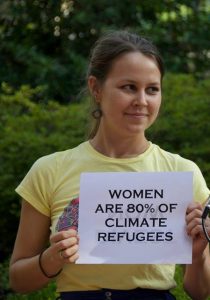
Evelyn Mayo just graduated from Barnard College with a major in Environmental Science, and is now working on environmental justice concerns in the DFW area with Legal Aid of NW Texas’s new Community Revitalization Program. Besides doing environmental work, Evelyn loves to paint, hang out with her sister (Fran Mayo, 2017 College of Constructive Hell-Raising graduate), her dog Chunk, and cook. Although she’s relatively new to the Dallas area, she has family in Oklahoma and Austin so is not totally new to the region.

John Rath is a familiar figure to North Texas environmentalists. He’s a former Greater Dallas Sierra Club Chair and member of the Club’s Executive Committee, and he headed-up Keep Grapevine Beautiful. He has two great kids, Charlie and Sarah, and is still an avid hiker. John was way ahead of the curve in terms of his commuter habits. For two decades, he rode a bike 21 miles from Grapevine to Plano and back again. John has been a stalwart ally of Downwinders in Grapevine, herding its council to approval of its own Green Cement ordinance during the fight over hazardous waste burning in the Midlothian cement plants.
Shannon Gribble is currently a second year GIS student at Brookhaven College. She came to 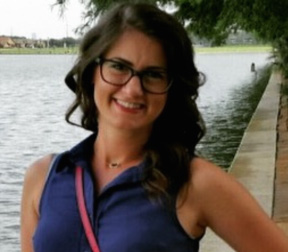 Downwinders through pure chance. In early June, while attending an unrelated happy hour, Shannon drifted away from her group of friends after hearing some scientific words being thrown around. The group she ran into was Downwinders at Risk at one of our Science and Socializing events. Without hesitation she instantly volunteered her skills and abilities to the group. The rest as they say, is history! Outside of school, Shannon spent thirteen years in Girl Scouts, enjoys traveling, collecting rocks, and doing her best to ride public transit or bike where she needs to go. Her goals are to help limit her carbon footprint and create a lasting “green” impact. She is also a champion tic-tac-toe player.
Downwinders through pure chance. In early June, while attending an unrelated happy hour, Shannon drifted away from her group of friends after hearing some scientific words being thrown around. The group she ran into was Downwinders at Risk at one of our Science and Socializing events. Without hesitation she instantly volunteered her skills and abilities to the group. The rest as they say, is history! Outside of school, Shannon spent thirteen years in Girl Scouts, enjoys traveling, collecting rocks, and doing her best to ride public transit or bike where she needs to go. Her goals are to help limit her carbon footprint and create a lasting “green” impact. She is also a champion tic-tac-toe player.

Maybe all you need to know about Amanda Poland is that she just made her first attempt to swim the English Channel a couple of weeks ago. She didn’t make it all the way across this time…but she’s already planning a second try. That energy is on display Monday thru Friday as a High School science teacher and swim coach at Plano West, where she’s also lobbying for a new air quality sensor as part of our regional monitoring network. Amanda was one of 15 graduates from the 2017 College of Constructive Hell-Raising, where she exhibited an uncanny talent to articulate principles of community organizing despite what she says is her relative newness to activism. She’s got four dogs, a cat, and a beta fish that doubles as a class pet. She’s “totes excited” to be on the board.

You already know how lucky we are to have engineer and UNT doctoral student Kari Northeim running our Wise County Ozone Project. Business degree. Engineering Degree. Soon-to-be Atmospheric Sciences degree. She’s married to an Emergency Room doc and has two great kids. What you might not guess from that description is that when she was 19 years old, she survived a single-engine plane crash that she says changed her life and “showed me that perseverance in times of trial is paramount to success.” Kari will be using our two new ozone monitors to make publishable science and history as part of the most ambitious citizen science project in North Texas.
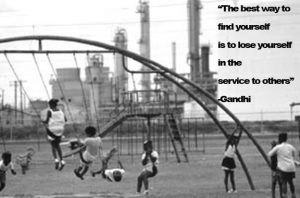
Announcing Downwinders 3.0
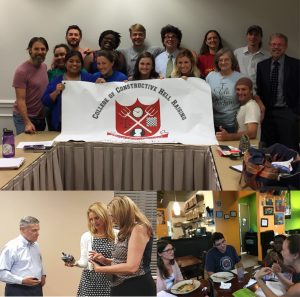
Downwinders is Regrouping, Renewing, and Regenerating. Almost half our new board is under 30. We have a new scientist. We have a new focus. Now we need you.
Many of you are aware of the time and effort Downwinders at Risk put into the unprecedented UNT Ozone Study which brought DFW elected officials and local atmospheric researchers together for the first time to operate the same computer model for air quality used exclusively by the State and EPA.
The results of that study provided a practical map for compliance with the current federal ozone standard: new controls on coal plants, cement kilns and gas facilities. It was shared by local officials with the EPA in hopes of that agency drafting a new DFW air plan that might finally address these major sources of local air pollution.
Those hopes were dashed by the presidential election last fall.
Because of a perfect storm of regulatory changes and politics, we now believe that the EPA won’t intervene on behalf of DFW air quality for the foreseeable future. It appears DFW will not even have to submit another serious plan to address smog for at least a decade – if then.
Over the last 20 years no other group has leveraged as much change from DFW federal clean air plans as Downwinders at Risk. We won the first comprehensive study of cement plant air pollution control technology by the state. We got new smog-control technology installed on the Midlothian cement plants. We used the “Green Cement” provision of another federal smog plan to stop the burning of hazardous waste in those cement plants and close the oldest, dirtest kilns in North Texas. In the most recent plan, we exposed the large impact of oil and gas pollution on local DFW smog levels.
But while we’ll continue to stay in the EPA’s ozone/smog regulatory loop through legal representation, we don’t see any opportunity to impact public policy using federal clean air plans the way we have in the past.
With this change, we had to rethink how we work toward better regional air quality in North Texas. How do we impact the most lives, in the biggest ways, with the resources we have?
We’ve come up with three strategies, all of them taking advantage of our long history of increasing the ability of local residents and governments to take on dirty air themselves.
____________________________________________
OUR NEW PRIORITIES
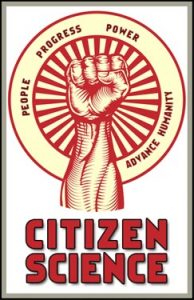
Build a modern, independent, and citizen-friendly regional air pollution monitoring network for DFW
You can’t fix problems unless you know about them, and this is a way to begin building a regional alternative to state monopoly of air quality expertise and resources.
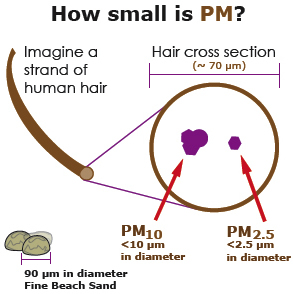
Identify, reduce, and eliminate health threats posed by widespread Particulate Matter (PM)pollution in DFW
PM is the new smog and local campaigns to reduce it can help a lot of people, especially those predominantly minority neighborhoods who’ve been dumped on the most.
Organize a grassroots campaign to restore local government zoning control of industrial hazards
A state government bought by polluters has gone too far in restricting the liberties of Texans and demolishing democracy at the local level. We’re fighting back.
____________________________________________
We co-founded the DFW Air Research Consortium last year with researchers from area universities and local governments with the idea of building a modern and locally-controlled air quality monitoring grid across DFW that can track pollution plumes in real time. This can become a powerful grassroots enforcement and education tool.
Downwinders itself bought two EPA-certified ozone monitors we’ll be using to specifically track smog levels in Wise County, where the State refuses to put a monitor despite evidence that’s where the region’s highest ozone readings are located.
This is more than just increasing the number of monitors – this is an opportunity to change the way people see air pollution affecting their lives. It’s also another opportunity to take what was the exclusive regulatory providence of an apathetic state government and give it to more concerned local governments.
We’re also beginning a new campaign focusing on microscopic pieces of soot known as Particulate Matter, or PM pollution. In recent years, PM pollution has been linked in the scientific literature to a wide variety of non-respiratory and cardiovascular diseases including ADHD, autism, Parkinson’s, dementia, and infertility. Like lead, many researchers believe there is no safe level of exposure to this kind of pollution.
Sources of PM pollution include any internal combustion engine, furnace, boiler and windswept piles of sand, or cement dust. Studies have found a correlation between proximity to a major source of PM pollution and increased risks of illness.
This is why other communities around the country are cracking down on idling trucks and buses and establishing buffer zones between major freeways and residences, parks and schools. We want to reduce the pollution as well as the exposure to it.
Finally, because there’s no hope of addressing air pollution from the oil and gas industry without any change in HB 40, the 2015 state law that took away local control of industrial zoning, we’ve begun a project aimed at building an alliance that challenges state overreach and promotes the restoration of traditional local control. Cities must have the right to protect their residents’ public safety and health. This campaign will challenge the status quo in both Austin and North Texas.
As always, they’ll also be campaigns we could not anticipate but have to wage. One example is the recent proposal by Dow Chemical to bag municipal trash for burning in the nation’s cement kilns. Dow has already targeted the local cement kilns in North Texas for this scheme, but Downwinders is pushing back hard and working with nationwide alliances to halt this project before it gets very far.
NOW WE NEED YOU

This coming THURSDAY is another North Texas Giving Day, a chance for your donations to be magnified by challenge grants and other incentives over the day. Because we’ve added responsibilities and staff, Downwinders at Risk needs this one to be our best, most productive Giving Day yet.
All transactions take place online that day. It’s simple to give and you can link to the Giving Day pay portal through our Downwinders’ website or FaceBook page beginning at 6 am on the 14th, and going all the way to midnight:
https://northtexasgivingday.org/npo/downwinders-at-risk-education-fund
DFW has been in continuous violation of the Clean Air Act for 26 years. We’re asking you to take a minute and contribute $26 to clean air work in the place where your lungs do most of their breathing.
We know hurricane season is testing the limits of our charitable giving, but $26 is all we’re asking. At a time when the state and federal government are intent on not protecting our air, Downwinders continues to be stubborn advocates for progress.
We deeply regret not being able to win a clean air plan for DFW in 2017 that might finally leave us in compliance with the Clean Air Act. But our long term goals remain the same. We hope you agree our work is worth your continued support. Thank you for your consideration.


